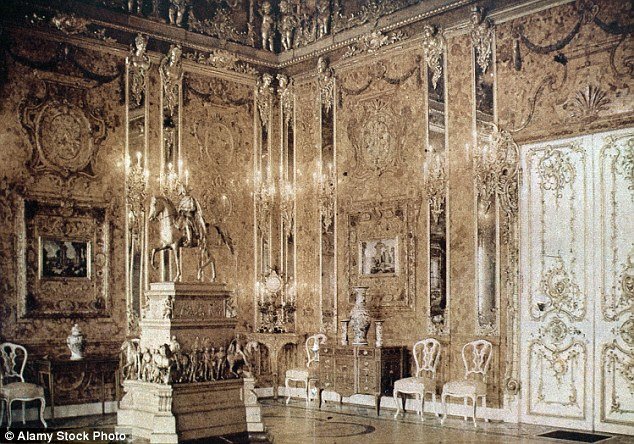
The room, built for Russian tsar Peter the Great in the 1700s and packed with amber, gold and precious jewels, was stolen by the Nazis and mysteriously disappeared at the end of the Second World War.
For decades, hunters have scoured Europe searching for the missing treasure to no avail.
But now, bosses at the Mamerki museum near Wegorzewo, north east Poland, say it may have been hidden behind a false wall that was sealed shut inside an old wartime bunker - after finding an unknown room measuring 6.5ft wide and 10ft long using geo-radar.
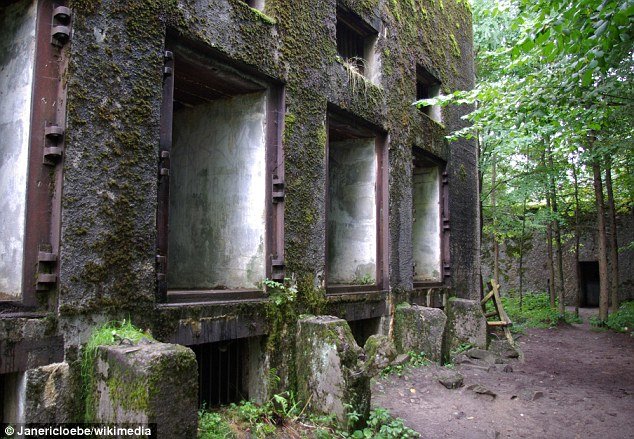
'Of course there were no such devices as ground-penetrating radar in the 1950s, so examining and finding hidden spaces wasn't possible.
'Inside may be elements of the Amber Chamber, but also other looted art. But there is no doubt that the room was created specifically for the purpose of treasure.'
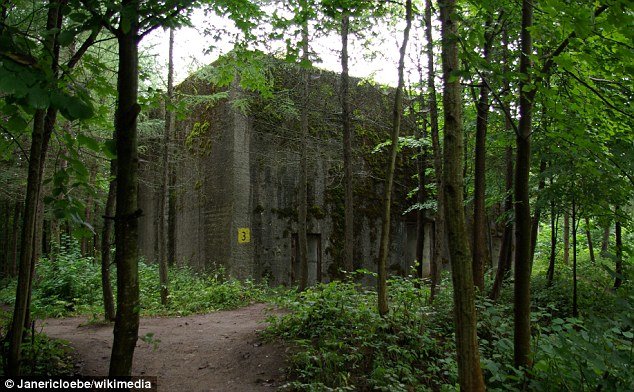
In the 1950s he told a Polish bomb squad unit that in the winter of 1944 he saw heavily-guarded trucks driving up to the bunker and unloading a large cargo.
After the trucks had been emptied, the room they had been placed in was sealed. It is thought parts of the Amber Room were stored in the bunker complex for later transportation.
Throughout the the next two decades, Polish bomb squads searched the bunkers for evidence of the hidden room, but failed to find anything.
The Amber Room was originally supposed to have been an amber cabinet - a gift from Friedrich-Wilhelm I of Prussia to Peter the Great.
But instead, it was decided to use the panels as wall coverings, surrounding them with gilded carving, mirrors and yet more amber panels.
In total, the room contained 450kg of amber and was finally completed in 1770.
The Nazis dismantled the room at Catherine Palace, near St Petersburg, when they arrived at the palace in October 1941.
The Russians had tried to conceal the grand room by covering it in wallpaper, but their plan was foiled.
The precious contents were then taken by the Germans by rail to Koenigsberg Castle, in what was then East Prussia. Now, the castle is found in the city of Kaliningrad.
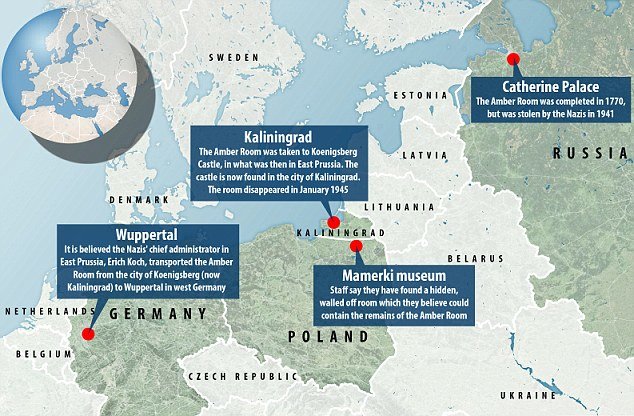
While some claimed it had been destroyed in the raids, others reported seeing 40 wagons moving away from the castle under a cloak of secrecy after the city fell to the Red Army.
In the 1950s, Erich Koch, the Nazis' chief administrator in East Prussia who is believed to have overseen the Amber Room's transportation from the city of Koenigsberg to Wuppertal in Germany, was taken from prison to the museum site to show Polish officials where the room was.
However he was unable to identify the location.
'In the 1960s, Koch was driven from prison to Bunker 31 and they tried to find it,' Mr Plebanczyk said. 'But they didn't know the exact location, and he couldn't specify where it was. But he was the last person to see the Amber Room in Koenigsberg.
'Historians agree that Mamerki is the logical place to look as transporting it from Koenigsberg, they would have to come here and this place is perfect because it was heavily guarded.
'Bunker 31 hadn't been completed so they could hide it there and then pretend building was still going on.'
Mr Plebanczyk said they now planned to drill a hole through one of the walls and insert a camera to see what is inside.
'Only when the footage confirms that the inside has actual historical content can we make an informed decision about the artefacts,' he said.
Asked why he was making the news public now, given that the radar readings were taken in September, he said: 'First we wanted to be sure that the information from the radar was correct.
'So we consulted a number of experts to verify it. We then had to go through the legal channels to declare it, and that takes a long time.'
He said he thinks they can start digging for the Amber Room in between four to eight weeks.
The site used to be the eastern headquarters of the German Army and close Hitler's infamous Wolf's Lair - his first Eastern Front military headquarters.
In 1982, the Russians began building a replica of the Amber Room.
It took more than 20 years and cost more than $12million, but visitors to Catherine Palace, near St Petersburg, can now see the grand room for themselves.
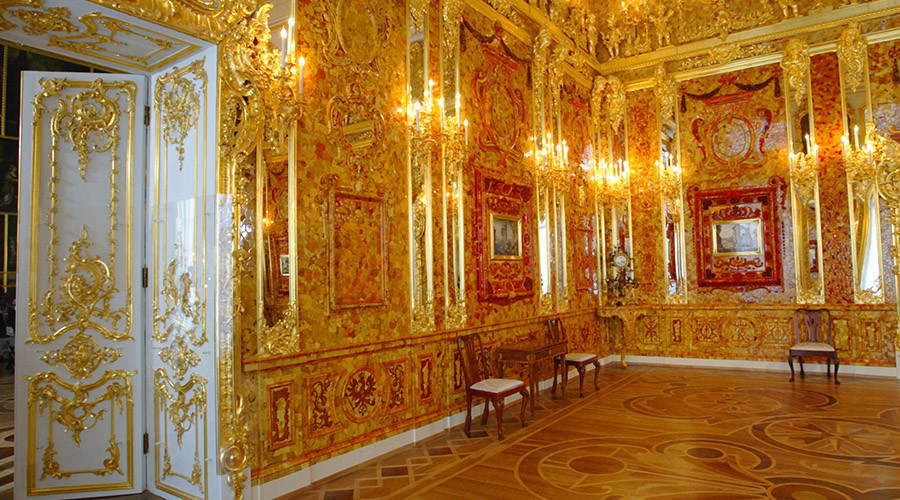



Reader Comments
to our Newsletter